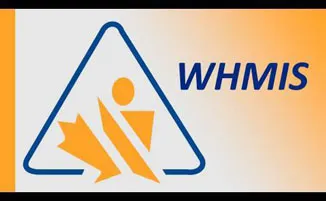
The Government of Canada published part 2 of the Hazardous Products Regulations (HPR) on February 11th 2015 in addition to the Hazardous Products Act under the Economic Action Plan 2014 Act, No.1 to replace WHMIS 1988 and to implement GHS (Global Harmonized System). In 1987, federal, provincial, and territorial governments began a consultative process on drafting of federal WHMIS legislation under the Hazardous Products Act (HPA) which then went in to effect in October 1988.
Now as of 2015, the new modified version has been aligned with GHS and is in a transition period between WHMIS 1988 and WHMIS 2015. The key elements of the system are cautionary labeling of containers of WHMIS controlled products, the provision of safety data sheets (SDSs),worker education and site-specific training programs.
WHMIS 2015 integrates GHS international standard
The purpose of new WHMIS 2015 is to improve how hazardous products are communicated to employers and employees,increase associated protective measures and also to significantly reduce costs. WHMIS 1988 had remained significantly the same since it was implemented in 1988. The classification of chemicals are more detailed and comprehensive in the new WHMIS 2015. Hazardous properties of chemicals that were not mentioned in the previous WHMIS have now been addressed. WHMIS brings significant changes in the areas of WHMIS such as:
1) Hazard classification:
- All physical hazard classes in the GHS have been adopted in the WHMIS with the exception Explosives hazard class. New physical hazard classes such as Combustible Dusts, Simple Asphyxiants, Pyrophoric Gases and Physical Hazards Not Otherwise Classified have also been added to the physical hazard list.
- All health hazard classes in the GHS have been adopted in Canadian WHMIS. The Biohazardous Infectious Materials hazard class (which is not a GHS health hazard class) is still included in the health hazard class. Furthermore, a new Health Hazards Not Otherwise Classified class has also been introduced.
- The environmental hazard class was not adopted in the new HPR regulation.
2) SDS (Safety Data Sheets):
Every product that is classified as a �hazardous product� under WHMIS that is intended for use, handling or storage in a workplace in Canada must have an SDS. WHMIS 2015 sets out requirements for safety data sheets (SDS) in Part 4 of the Hazardous Products Regulations (HPR) setting out the 16-heading SDS format and the content required under each of the 16 headings whereas WHMIS 1988 required nine (9) categories of information to be present in the MSDS (Material Safety Data Sheets).
3) Labelling:
Supplier labels must be both English and French, durable and legible. The new labeling in WHMIS 2015 also requires pictograms, signal words, hazard statement and precautionary statements instead of symbols that correspond to hazard classes. The hatched border previously used by WHMIS 1988 is no longer required.
4) Terminology:
The term �Controlled products� in WHMIS 1988 is replaced by �Hazardous products� in WHMIS 2015
Who enforces WHMIS?
WHMIS is put into effect by a combination of federal and provincial laws. It is enforced by Canadian Government Departments Responsible for Occupational Health and Services in the federal, provincial and territorial jurisdictions or Labour Program for federally regulated workplaces. Authorities may inspect workplaces to ensure the implementation of WHMIS. Health Canada is the government body responsible for making the required changes to the overall federal WHMIS-related laws.
WHMIS Key Compliance Dates
11th February 2015 � 31st May 2017: Suppliers (Manufactures, Importers and distributors) must comply with WHMIS 1988 or WHMIS 2015. Employers can consult F/P/T regulator.
1st June 2017 � 31st May 2018: Manufacturers and Importers must comply with WHMIS 2015 whereas Distributors still choose between WHMIS 1988 or WHMIS 2015. Employers must now also comply with WHMIS 1988 or WHMIS 2015.
1st June 2018- 30th November 2018: All suppliers must comply with WHMIS 2015. Employers must still comply with either WHMIS 1988 or WHMIS 2015.
Need to get WHMIS compliant Safety Data Sheets?
EcoMundo�s SDS Factory is the existing software solution that enables you to manage all your issues related to SDS and SDS compliance, and now SDS under WHMIS.
The Government of Canada published part 2 of the Hazardous Products Regulations (HPR) on February 11th 2015 in addition to the Hazardous Products Act under the Economic Action Plan 2014 Act, No.1 to replace WHMIS 1988 and to implement GHS (Global Harmonized System). In 1987, federal, provincial, and territorial governments began a consultative process on drafting of federal WHMIS legislation under the Hazardous Products Act (HPA) which then went in to effect in October 1988.
Now as of 2015, the new modified version has been aligned with GHS and is in a transition period between WHMIS 1988 and WHMIS 2015. The key elements of the system are cautionary labeling of containers of WHMIS controlled products, the provision of safety data sheets (SDSs),worker education and site-specific training programs.
WHMIS 2015 integrates GHS international standard
The purpose of new WHMIS 2015 is to improve how hazardous products are communicated to employers and employees,increase associated protective measures and also to significantly reduce costs. WHMIS 1988 had remained significantly the same since it was implemented in 1988. The classification of chemicals are more detailed and comprehensive in the new WHMIS 2015. Hazardous properties of chemicals that were not mentioned in the previous WHMIS have now been addressed. WHMIS brings significant changes in the areas of WHMIS such as:
1) Hazard classification:
- All physical hazard classes in the GHS have been adopted in the WHMIS with the exception Explosives hazard class. New physical hazard classes such as Combustible Dusts, Simple Asphyxiants, Pyrophoric Gases and Physical Hazards Not Otherwise Classified have also been added to the physical hazard list.
- All health hazard classes in the GHS have been adopted in Canadian WHMIS. The Biohazardous Infectious Materials hazard class (which is not a GHS health hazard class) is still included in the health hazard class. Furthermore, a new Health Hazards Not Otherwise Classified class has also been introduced.
- The environmental hazard class was not adopted in the new HPR regulation.
2) SDS (Safety Data Sheets):
Every product that is classified as a �hazardous product� under WHMIS that is intended for use, handling or storage in a workplace in Canada must have an SDS. WHMIS 2015 sets out requirements for safety data sheets (SDS) in Part 4 of the Hazardous Products Regulations (HPR) setting out the 16-heading SDS format and the content required under each of the 16 headings whereas WHMIS 1988 required nine (9) categories of information to be present in the MSDS (Material Safety Data Sheets).
3) Labelling:
Supplier labels must be both English and French, durable and legible. The new labeling in WHMIS 2015 also requires pictograms, signal words, hazard statement and precautionary statements instead of symbols that correspond to hazard classes. The hatched border previously used by WHMIS 1988 is no longer required.
4) Terminology:
The term �Controlled products� in WHMIS 1988 is replaced by �Hazardous products� in WHMIS 2015
Who enforces WHMIS?
WHMIS is put into effect by a combination of federal and provincial laws. It is enforced by Canadian Government Departments Responsible for Occupational Health and Services in the federal, provincial and territorial jurisdictions or Labour Program for federally regulated workplaces. Authorities may inspect workplaces to ensure the implementation of WHMIS. Health Canada is the government body responsible for making the required changes to the overall federal WHMIS-related laws.
WHMIS Key Compliance Dates
11th February 2015 � 31st May 2017: Suppliers (Manufactures, Importers and distributors) must comply with WHMIS 1988 or WHMIS 2015. Employers can consult F/P/T regulator.
1st June 2017 � 31st May 2018: Manufacturers and Importers must comply with WHMIS 2015 whereas Distributors still choose between WHMIS 1988 or WHMIS 2015. Employers must now also comply with WHMIS 1988 or WHMIS 2015.
1st June 2018- 30th November 2018: All suppliers must comply with WHMIS 2015. Employers must still comply with either WHMIS 1988 or WHMIS 2015.
Need to get WHMIS compliant Safety Data Sheets?
EcoMundo�s SDS Factory is the existing software solution that enables you to manage all your issues related to SDS and SDS compliance, and now SDS under WHMIS.







